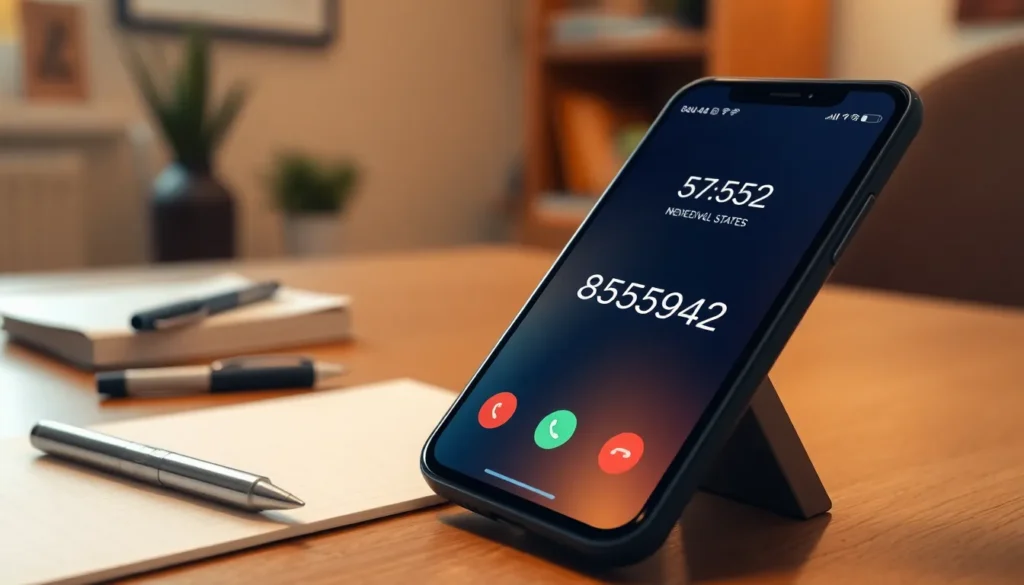Table of Contents
ToggleIn a world where everyone’s glued to their smartphones, it’s crucial that mobile apps don’t just cater to the tech-savvy elite. Accessibility testing for mobile apps ensures that everyone, including those with disabilities, can enjoy the digital experience. Think of it as giving your app a superhero cape—making it accessible to all users, regardless of their abilities.
Overview of Accessibility Testing for Mobile Apps
Accessibility testing for mobile apps identifies barriers that prevent users, particularly those with disabilities, from interacting effectively with apps. This process ensures apps provide an equitable experience to all users, thus promoting inclusiveness in digital platforms. By focusing on various user needs, developers can create products that cater to diverse abilities.
Multiple tools assist in conducting accessibility testing. Automation tools like Axe and Wave scan apps for compliance with standards such as WCAG and ARIA. Manual testing, however, plays a crucial role by evaluating user interactions and identifying issues that automated tools may overlook. Engaging users with disabilities in the testing process brings valuable insights that enhance app functionality.
Mobile platform guidelines from Apple and Google advocate for best practices in accessibility. Apple’s Accessibility Programming Guide cites measures for voiceover support and dynamic text, while Google’s Material Design emphasizes color contrast and touch target sizes. Adhering to these guidelines improves app usability for everyone.
Testing should also encompass various disabilities. Visual impairments necessitate screen reader compatibility and alternative text for images. Motor impairments often require voice control and alternative input options. Hearing impairments may demand visual notifications and captions for audio content. Addressing these aspects ensures a holistic strategy.
Integrating accessibility testing throughout the development cycle is essential. Early identification of issues reduces costs and enhances user experience before app deployment. Continuous evaluations post-launch ensure the app remains accessible as updates and features are added. Prioritizing accessibility fosters user loyalty and expands market reach.
Importance of Accessibility in Mobile Applications

Accessibility in mobile applications enhances overall user interaction and satisfaction. Recognizing diverse user needs leads to a more inclusive environment.
Enhancing User Experience
Improved accessibility accommodates all users, boosting engagement and retention. Features such as adjustable text sizes and voice commands allow individuals with disabilities to navigate seamlessly. User-friendly design encourages users to explore app functionalities without barriers. Robust feedback mechanisms enhance usability, adapting to various needs effectively. Creating an accessible experience fosters positive interactions, resulting in increased user loyalty.
Legal and Ethical Considerations
Accessibility aligns with legal standards such as the Americans with Disabilities Act (ADA) and Web Content Accessibility Guidelines (WCAG). Non-compliance with these guidelines can lead to legal repercussions, affecting brand reputation. Ethical responsibility compels developers to create inclusive digital spaces for everyone. Organizations prioritizing accessibility contribute to social equity, reflecting commitment to diverse user populations. Embracing accessibility translates to a broader audience reach and compliance with evolving regulations.
Methods for Accessibility Testing
Accessibility testing incorporates a blend of automated and manual methods, ensuring mobile apps cater to all users, including those with disabilities.
Automated Testing Tools
Automated testing tools save time by quickly identifying accessibility issues. Tools like Axe and Wave analyze app elements and generate reports, highlighting areas needing improvement. These tools assess compliance with accessibility standards, streamlining the testing process. While they can’t catch every issue, they significantly reduce the workload for developers. They provide valuable insights into coding practices and can be integrated into Continuous Integration/Continuous Deployment (CI/CD) pipelines for efficiency. Leveraging automated tools enhances the overall accessibility testing strategy, promoting a more inclusive user experience.
Manual Testing Techniques
Manual testing techniques bring a human element to accessibility assessments. Testers engage with the app to experience features firsthand, uncovering issues that automated tools might miss. Evaluators use keyboard navigation, screen readers, and alternative input methods to simulate user interactions. Collaborating with users with disabilities fosters deeper insights into real-world app usage. Reviewing color contrast, font sizes, and touch targets ensures that designs meet usability standards. This approach allows teams to address nuances in user experience, resulting in a more polished and accessible application for everyone.
Common Accessibility Issues in Mobile Apps
Accessibility issues frequently arise in mobile apps, impacting the overall user experience. These challenges particularly affect users with different disabilities.
Visual Impairments
Visual impairments encompass a range of conditions, including blindness and low vision. Users may encounter difficulties when apps lack sufficient color contrast, making text and important elements hard to distinguish. Screen reader compatibility plays a crucial role; if the app’s elements aren’t properly labeled, users cannot effectively navigate the interface. Additionally, zoom functionalities help users with low vision, yet they often remain untested, leading to frustration. Implementing large, readable fonts enhances accessibility for visually impaired users, creating a more inclusive experience.
Motor Impairments
Motor impairments affect a user’s ability to interact with their device. Users may struggle with tapping small buttons, which can hinder navigation. Ensuring that interactive elements are at least 44 points wide greatly reduces the risk of mis-selection. Touch targets become even more essential in preventing accidental inputs. Gesture-based controls may pose challenges as well; users often benefit from alternative interaction methods. Simple features like voice commands and switch control functionality empower users to fully engage with the app, enhancing usability and satisfaction.
Cognitive Impairments
Cognitive impairments affect users’ understanding and interaction with app content. Complex language can create barriers, making it difficult for users to navigate. Simple language and clear instructions significantly aid comprehension. Users often benefit from structured layouts; consistent navigation fosters familiarity. Providing content in digestible chunks enhances retention and minimizes confusion. Incorporating visual aids, such as icons and images, also supports users with cognitive impairments, making the app more accessible overall. These strategies promote a smoother experience and encourage greater participation.
Best Practices for Implementing Accessibility Testing
Effective accessibility testing requires a strategic approach. Prioritizing user engagement leads to more inclusive mobile applications.
Involving Users with Disabilities
Engaging users with disabilities during the testing process provides real-world insights. These insights help identify usability challenges that automated tools may miss. Conducting user interviews and tests allows developers to understand specific needs. Incorporating feedback from these users often enhances app functionality. Focus groups can gather diverse perspectives, ensuring designs align with various accessibility requirements. Open dialogue promotes a culture of inclusivity and fosters innovation in app development. Additionally, it ensures developers consider the full range of user experiences.
Continuous Monitoring and Feedback
Continuous monitoring allows for the identification of accessibility issues post-launch. Regular feedback loops ensure that updates maintain or improve accessibility standards. Incorporating analytics can highlight user interactions that reveal barriers. Establishing a feedback mechanism encourages users to report accessibility challenges. Involving accessibility advocates in ongoing assessments enhances adherence to best practices. Emphasizing adaptive methodologies supports evolving user needs. Organizations can implement periodic audits to evaluate compliance with WCAG and ADA standards. This proactive approach maximizes user experience and upholds brand integrity in the long term.
Accessibility testing for mobile apps is not just a technical requirement; it’s a commitment to inclusivity. By prioritizing accessibility, developers create applications that cater to a diverse user base, ensuring that everyone can engage effectively.
Employing both automated and manual testing techniques allows for a comprehensive evaluation of usability. Involving users with disabilities in the testing process provides invaluable insights that enhance app functionality and user satisfaction.
As mobile technology continues to evolve, maintaining accessibility standards will be crucial for fostering user loyalty and expanding market reach. Organizations that embrace accessibility not only comply with regulations but also contribute to a more equitable digital landscape.




